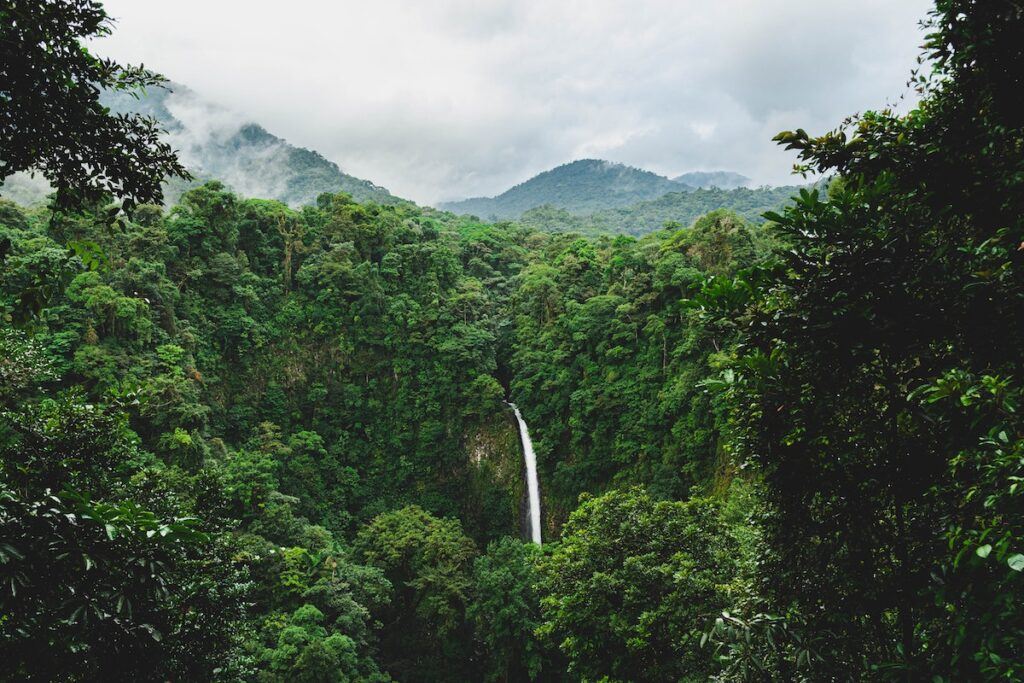Looking for the perfect Costa Rica itinerary? After spending nearly a month exploring this beautiful country and seeing how much it has to offer, I left only wanting more. Isn’t that the best-case scenario when traveling, though?
Whether you only have a week to experience Costa Rica or can give yourself a bit more time to explore, I’ve put together three awesome itinerary options, complete with where to go, what to do, and where to stay:
7-Day Costa Rica Itinerary: The Highlight Reel
If you only have a week to enjoy the best of the country, it doesn’t give you much time to get from place to place, so I recommend renting a car, so you can move around quickly and easily, making the most of your time.
There are a few places that you definitely don’t want to miss out on. Here’s how I would spend seven days in Costa Rica:
Day 1: Arrive in San José & get a taste for city life
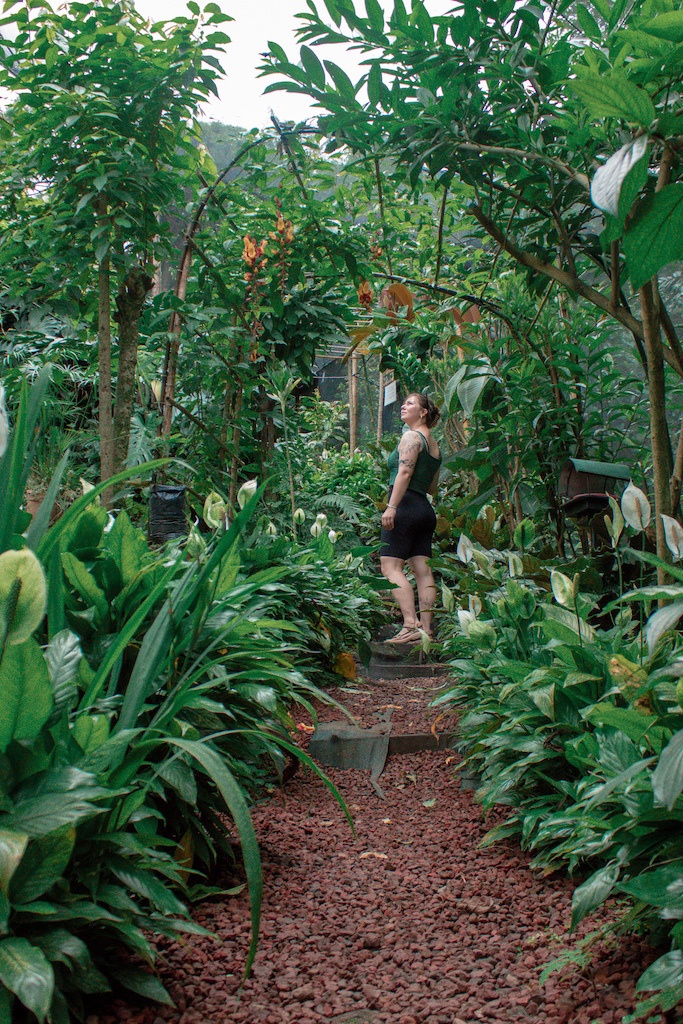
To get the most out of San José in just a short time, opt to fly in as early as possible. Check in to your accommodations and start exploring right away (maybe even joining a food & sightseeing tour, like I did). Since you’ll only have a day, I recommend hitting up places that are close together: start with Spirogyra Butterfly Garden in Barrio Amón, then go next door to Simón Bolivar Botanical Garden & Zoo.
From there, I suggest heading to Mercado Borbón or Mercado Central to check out the variety of fruits and vegetables. This is also a great place to grab lunch, as it’s cheap, quick, and delicious. These two markets are also central places for locals, so you’ll get a taste of Costa Rican city life.
Find more ideas for what to do in San José here, along with recommendations on where to stay. You’ll want to get a good night’s rest, because this is just the beginning of your adventure. Next stop: La Fortuna!
- Where to stay in San José: I recommend this Airbnb for solo travelers and couples. If you’re on a budget, Selina is a great option as well and offers a co-working space.
Days 2-4: La Fortuna Hot Springs & Arenal Volcano
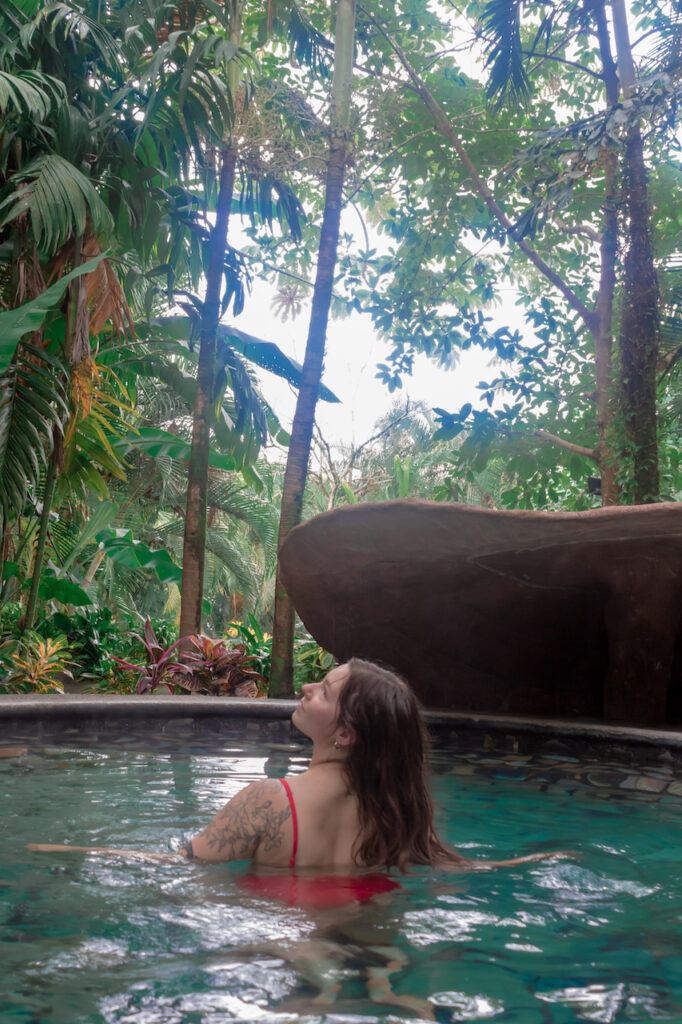
From San José, it’s easy to get to La Fortuna via public transportation, but for such a short trip, a rental car might be a better option if you really want to get the most out of La Fortuna. This area is famous because of the monstrous Arenal Volcano, the thundering La Fortuna Waterfall, and an abundance of adventure activities. From zip-lining and white-water rafting to swimming at the base of waterfalls, La Fortuna has it all.
Due to volcanic activity from the Arenal Volcano, La Fortuna is also the best spot in Costa Rica to find hot springs. I recommend spending at least two full days there, so you can check out Arenal National Park, La Fortuna Waterfall, and some hot springs.
Days 5-6: Monteverde Cloud Forest
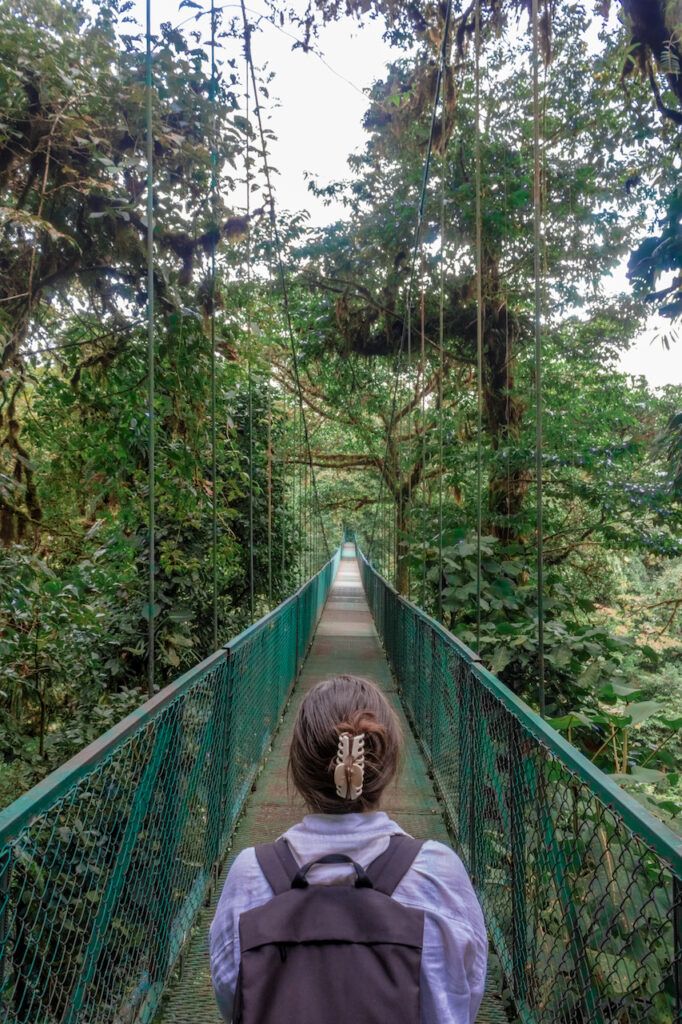
From La Fortuna, you can either drive to Monteverde or take a shuttle that includes a boat transfer. I did the latter, and the boat ride across Lake Fortuna in itself was an awesome experience, so much that it didn’t feel like any other boring shuttle service.
Even if you only have a week to enjoy Costa Rica, you absolutely cannot skip out on Monteverde. This cloud forest was my favorite place in the country, because of its mystical quality, mind-blowing biodiversity, and abundance of hiking opportunities. To be honest, two days doesn’t feel like enough time here, but it’s better than skipping it altogether.
Some key places in Monteverde are the Monteverde Cloud Forest Preserve, Selvatura Adventure Park, and Bosque Eterno de los Niños. These are all spots where you can find nature trails, hanging bridges, zip-lines, and tons of wildlife. I recommend going on a night tour through the cloud forest, and venturing out to the waterfalls and trekking through the jungle.
- Where to stay in Monteverde: There are few places that give you the same value for your money than Hotel El Bosque, which is where I loved staying. It’s in the middle of the forest and only a short drive from the Monteverde Cloud Forest Preserve.
Day 7: Cartago & farewell to Costa Rica
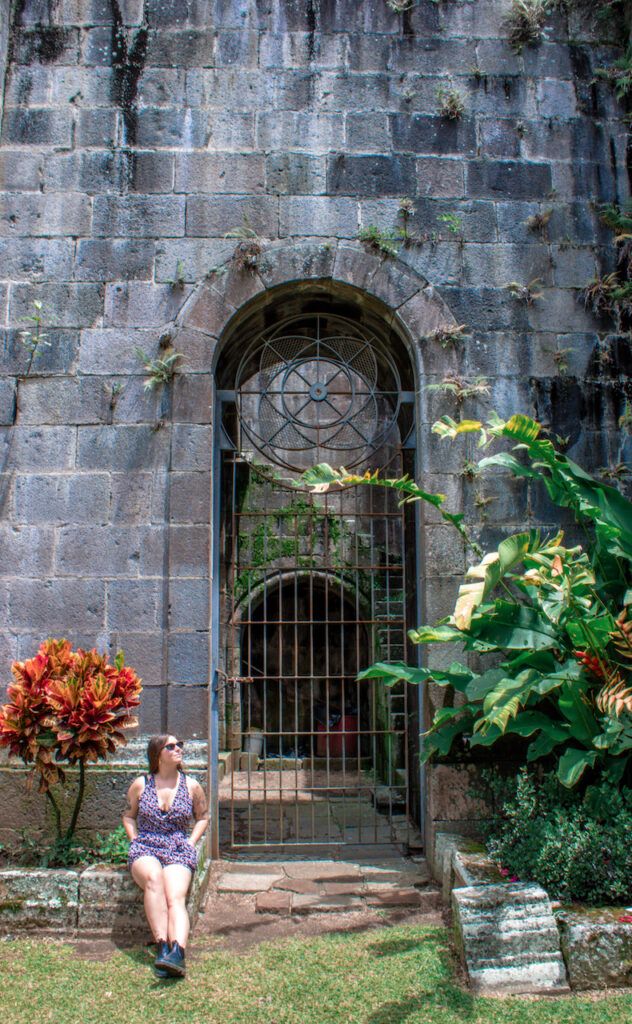
On your last day in Costa Rica, I recommend venturing to Cartago if you have time to do so. It’s only about an hour from the San José city center and offers a different view of Costa Rican history, as it used to be the country’s capital. Here you can check out the ruins of an unfinished cathedral, go to the stunning Lankester Botanical Garden, and visit the municipal market for an authentic bite. In my opinion, no trip to Costa Rica is complete without getting the dose of history and culture that Cartago offers.
Compared to the bustle of San José, Cartago is a much more laid-back city, which is why I think it’s a great alternative as your trip is winding down. The municipal market there is also a great spot to get cheaper souvenirs before you head home.
2-Week Costa Rica Itinerary: Pacific Coast & Mountains
With two whole weeks in Costa Rica, you’ll experience much more variety, which better captures the diversity of the landscape. While one week grants you the opportunity to focus on the mountains and dense forests, this two-week itinerary brings you to the Pacific coast as well, which has some stellar beaches and national parks.
Note: For two weeks in Costa Rica, renting a car is ideal if you want to truly take advantage of all the sites and off-the-beaten-path places. However, this itinerary is totally doable via public transportation, and I’ll give you tips on how to get from place to place.
Days 1-2: Explore San José
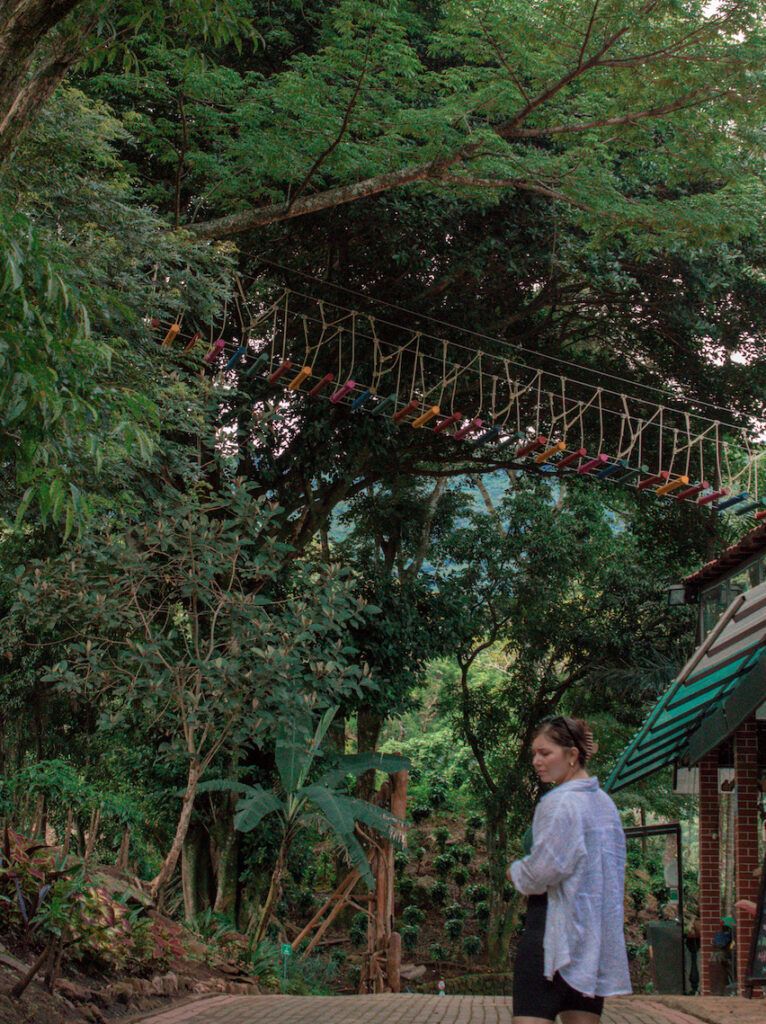
Since this itinerary is longer, I definitely recommend taking advantage of it by spending more than just a day in San José. Along with everything mentioned above, I recommend getting out of the city center and exploring other areas, like Hacienda La Chimba Coffee Farm. This gorgeous, colonial-style farm has enough to occupy you for an entire morning or even the whole day. Only 20 minutes outside of San José, it has hiking trails, coffee tours (which are more ideal during harvesting season in September), and even a zip-line.
Staying in San José for a couple days also gives you a chance to venture out to Cartago, Escazú, or other surrounding areas to enjoy what Costa Rican city life has to offer.
Days 3-5: Enjoy Uvita and Marino Ballena National Park
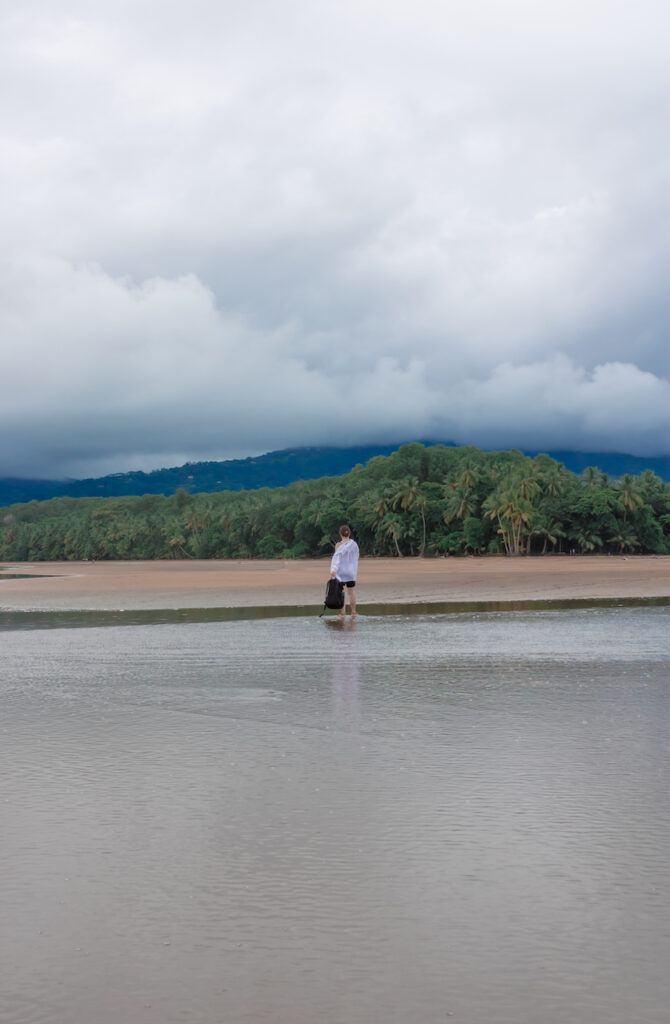
From San José, head to the Pacific coast, starting in Uvita. To get there, you can either take a 7:30am Tracopa bus or drive there if you’ve rented a car. The length of this trip is about the same, as the bus is direct and makes very few stops.
Uvita is a small beach town that encompasses Marino Ballena National Park. Because the national park takes up a large majority of the beach’s real estate, there are no big hotels right on the coast. This makes for a more untamed experience, which I absolutely loved.
Besides checking out the beach in the park, I recommend heading to Playa Ventanas if you’ve rented a car; if not, you can skip it, as the public transportation getting back to town isn’t very reliable. Also don’t miss out on the Uvita Waterfall and nearby swimming holes, which you can read about in this Uvita guide.
- Where to stay in Uvita: I stayed at Cascada Verde Hostel, which has a treehouse vibe. I loved it and would definitely stay there again, even though it’s a long walk from town and too far to walk to the beach.
Days 6-8: Soak up the beauty of Manuel Antonio
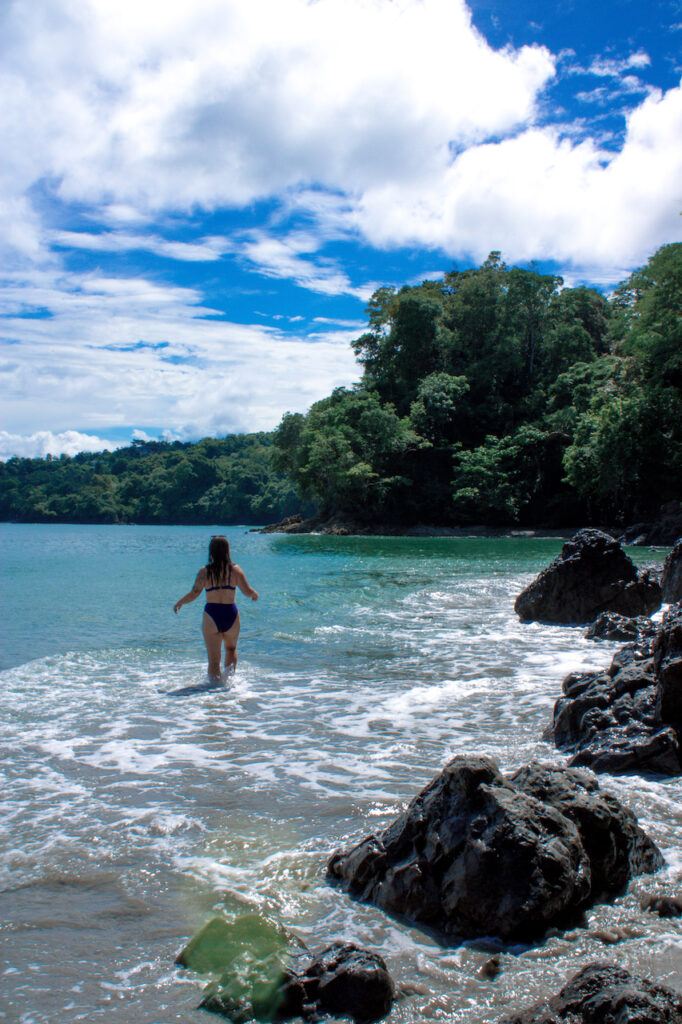
Manuel Antonio National Park is the most-visited national park in Costa Rica, and I quickly understood why as soon as I got there. As far as wildlife diversity and overall scenery, it feels absolutely unreal. Not only is the park worth spending at least a day exploring, but the town itself has hidden gems, like Playa Biesanz (find out how to get there in this Manuel Antonio guide).
Overall, Manuel Antonio is completely worth spending two days in, even though most things are overpriced and there are crowds almost year-round (but if you get to the park right when it opens at 7am, you can avoid the crowds for the most part). Also, stay somewhere that has a kitchen so you can save money on meals. (Find more Costa Rica budget tips here.)
Some popular activities in Manuel Antonio are night tours (I did this one and loved it), mangrove boat tours, and visiting nearby Rainmaker Park to see waterfalls and hanging bridges.
- Where to stay in Manuel Antonio: Accommodation is not cheap here in general, but I stayed in this gem of an Airbnb and thought it was a phenomenal choice for a solo female traveler like me. A great choice for backpackers is Selina, which has a co-working space and a casual, social environment. If you have more room in your budget, I’d recommend staying at Shana by the Beach, which is the hotel that you have to go through to get to Playa Biesanz.
Days 9-11: Head to Monteverde Cloud Forest
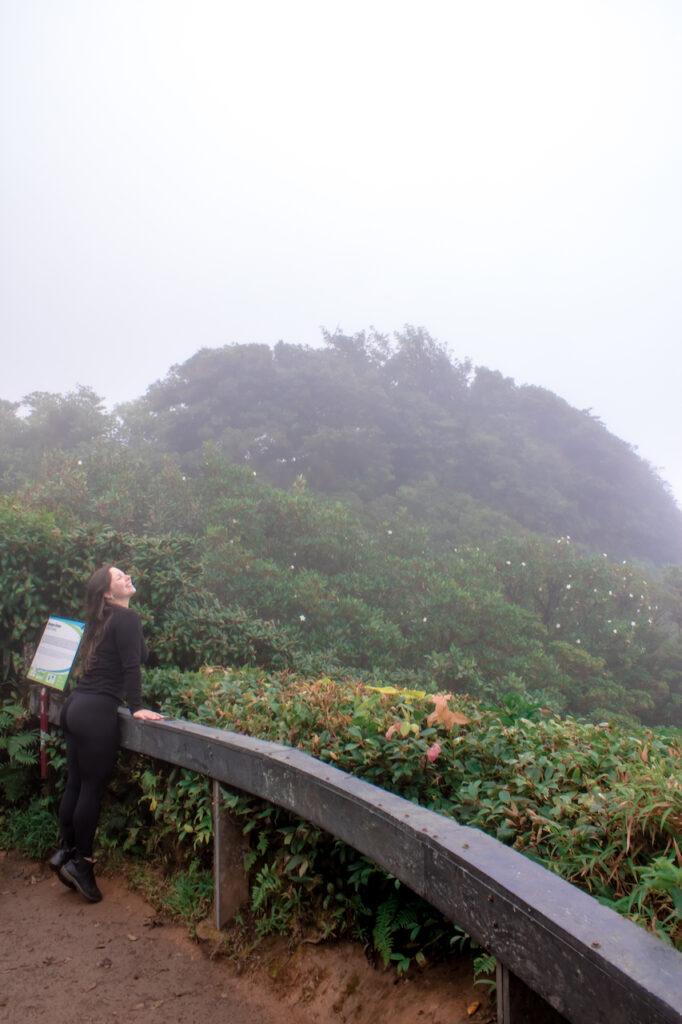
Since you’ll be in Costa Rica for two weeks, I suggest spending an day or two more than you would if you were only in the country for one week. See my above recommendations for things to do in Monteverde, along with where to stay.
The best part about having three days as opposed to one or two is that you’ll have more opportunities to do activities. Considering that Monteverde is so green, it should come as no surprise that it rains there almost year-round, which can make it more challenging to spend time outdoors (unless you use this Costa Rica packing list and prepare like a pro).
Another benefit of having extra time in Monteverde is that you can venture out to some amazing nearby places, like the El Tigre waterfalls. Visiting them is much easier if you have a car, but this tour can also take you there.
Days 12-13: Check out La Fortuna and the surrounding area
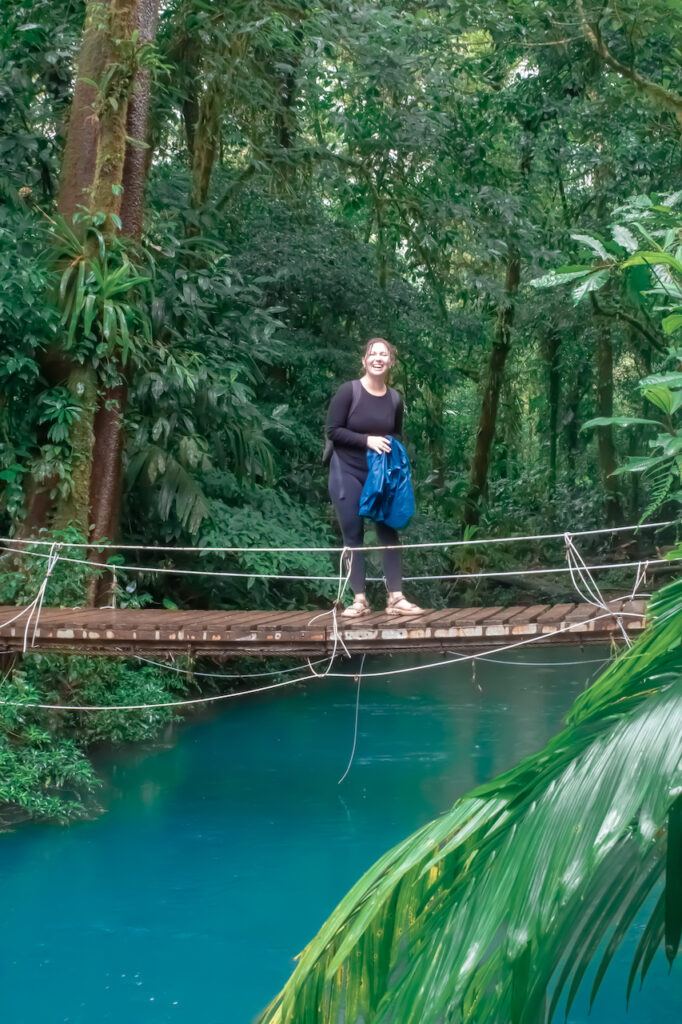
Personally, La Fortuna wasn’t my favorite place in Costa Rica, so it would be the first one I’d say goodbye to on a two-week itinerary. However, having a rental car would have changed the picture completely for me, as most of the places I wanted to go were impossible to get to via public transportation or even taxis.
Along with everything I mentioned on the above seven-day itinerary, I also suggest heading to Río Celeste at Volcán Tenorio National Park if you can. There you’ll find a river so bright blue that it’s hard to believe somebody didn’t dump dye into it. You can learn about how the river gets its color, see a magnificent waterfall, and admire tons of wildlife there too. If you haven’t rented a car, I recommend this tour that will take you there.
Day 14: Back in San José
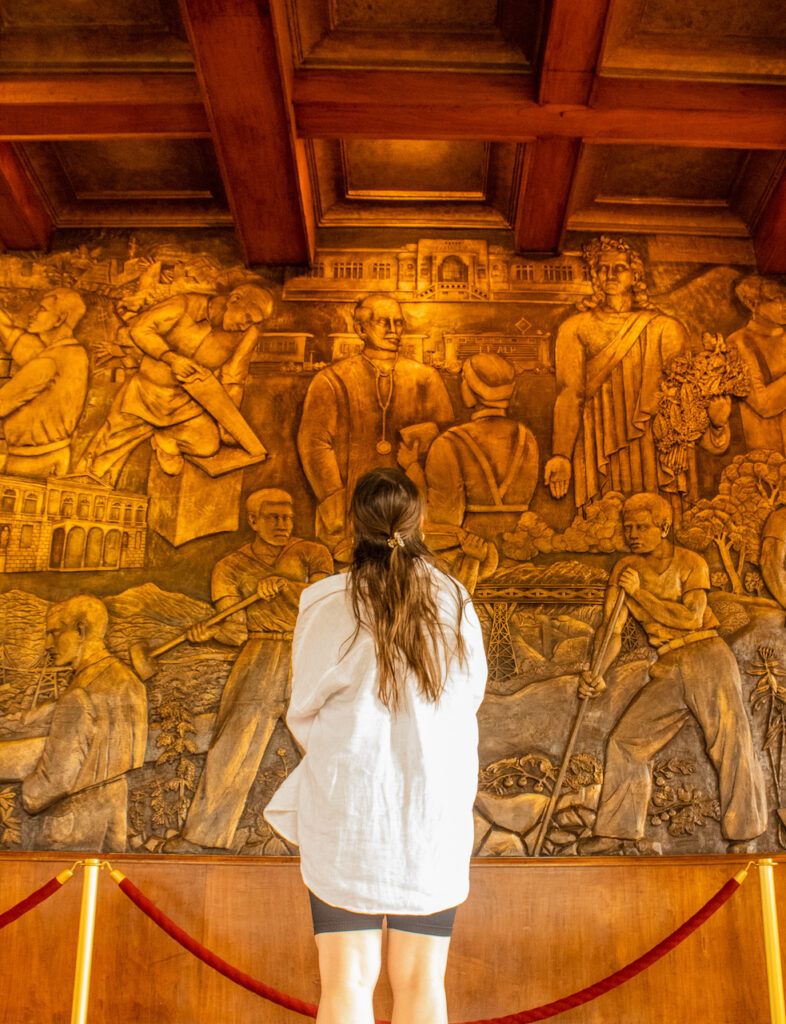
Once you’re back in San José unwinding after an awesome two-week adventure, take it easy by leisurely visiting a few museums and checking out the local markets. I recommend the Museum of Costa Rican Art, which is free, because after two weeks around Central America’s most expensive country, you’ll be glad to see at least one free activity, guaranteed!
The markets, Mercado Borbón and Mercado Central, are both great places to get souvenirs or grab a cheap meal on your way out of Costa Rica. Check out my guide to San José for more ideas on what to do, where to stay, and other helpful tips.
1-Month Costa Rica Itinerary: Coast to Coast
Since I spent about a month exploring Costa Rica, I’m a bit partial to this itinerary. There’s so much to see and do in this incredible country that if you are able to spend this long here, do it. Most of the destinations below have been covered in the seven-day and two-week itineraries, but here I’ll include any activities or sights that you can take advantage of with the additional time you’ll have.
Here’s how I would spend one month in Costa Rica:
Days 1-3: Get the most out of San José and Cartago
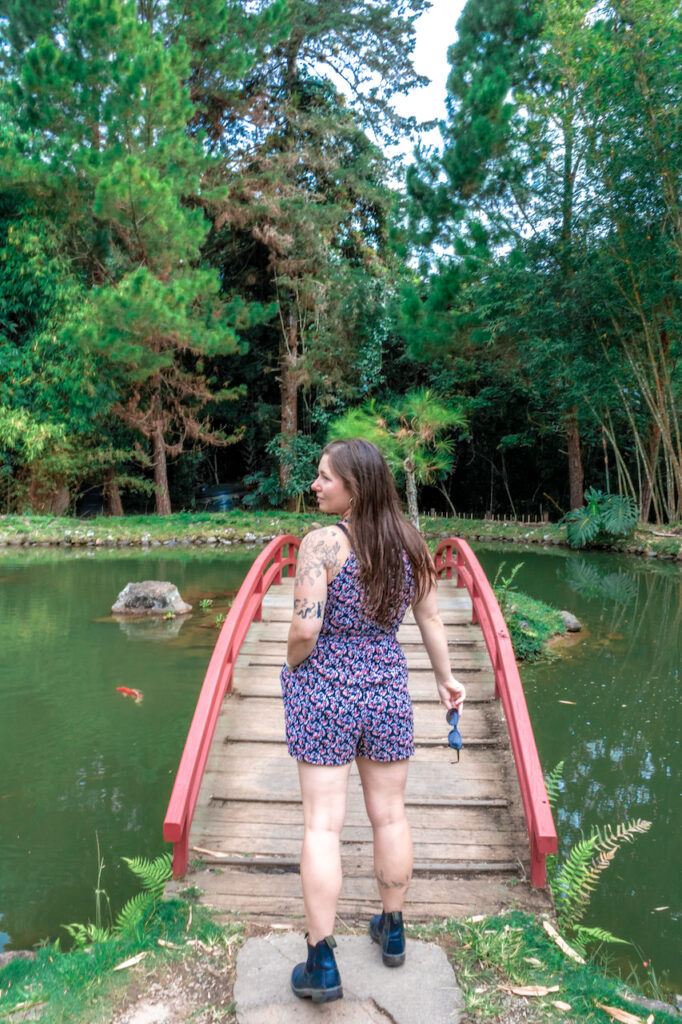
Right off the bat, I would definitely spend at least 48 hours in San José, making sure to check out the city center, markets, museums, and restaurants. I recommend spending at least a half day in Cartago, going to the Lankester Botanical Garden, Cultural Center, and municipal market.
The area surrounding San José has several volcanos that you can easily visit if you have a rental car or hop on a tour, like this one that goes to Irazú volcano. Poas Volcano is also an awesome place if you have time, as it has a mysterious blue lake in its crater that you can see if you’re lucky enough have cloudless weather.
Most Costa Rica itineraries go in a loop, many of them taking the Caribbean route first. However, I did the opposite and went to the Pacific coast first, which is what I’ll share here, as I found it to be easy to do without a rental car.
Days 4-7: Relax in Uvita and explore Marino Ballena National Park
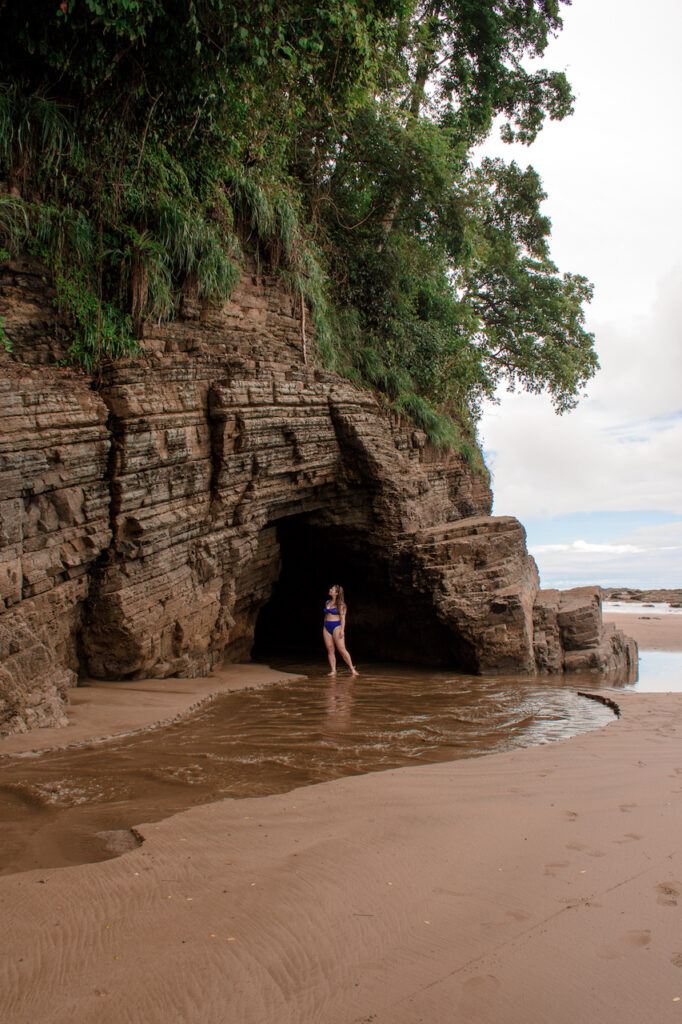
Just like the two-week itinerary above, I recommend heading to Uvita from San José. Having at least three days here is ideal, as you’ll be able to venture out to nearby places and see more. Uvita is also close to Corcovado National Park, which I wasn’t able to get to this time (but definitely wish I had). Many people say it’s one of the most wild national parks, with a higher density of wild animals, especially pumas and jaguars.
When you visit Uvita, consider checking out Playa Arco, which is part of Marino Ballena National Park; you can find out how to get there in my Uvita guide. This beach was totally empty when I got there, and I loved exploring and connecting with nature without another human soul around. It was my favorite place I visited in Uvita by far.
Days 8-10: Chill and surf in Dominical
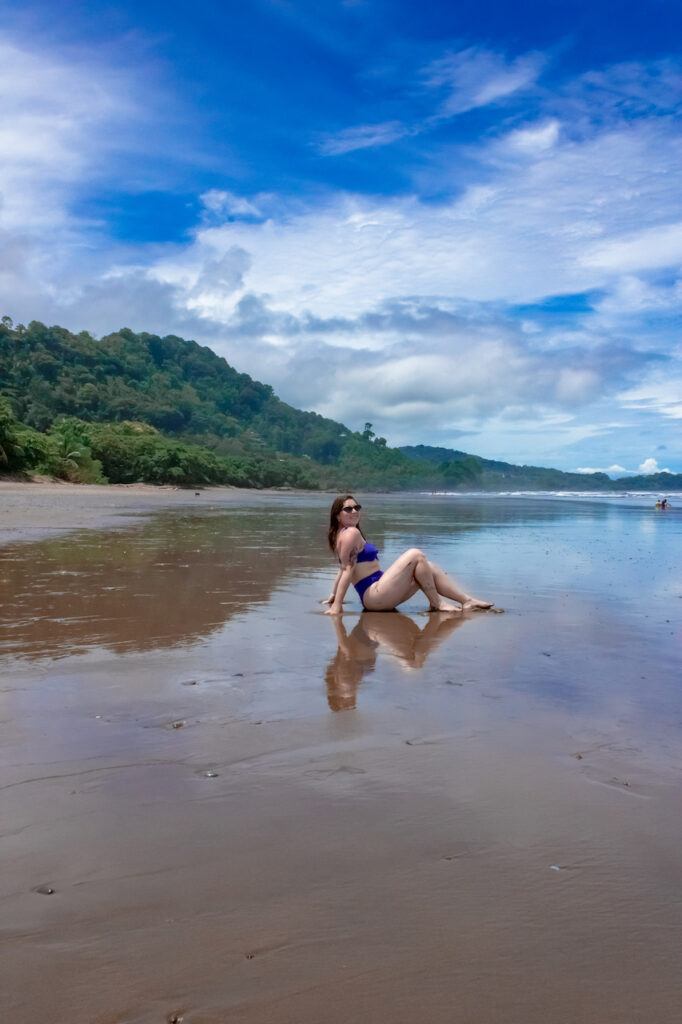
From Uvita, you can easily hop on a bus to Dominical, which is only 20 minutes away. Buses pass by every 30 minutes or so, cost only a couple dollars, and will take you right to the beach.
One regret I had in Costa Rica was not spending enough time in Dominical. This hip surf town has giant stretches of soft, sandy beach, with a cool, laid-back atmosphere that I adored. I recommend spending a couple days here, soaking up the sun and taking it nice and slow.
Dominical is also a great place to take a surf lesson, join a yoga class, or go for a long walk on the beach. There’s a small corridor next to the beach where you’ll find people selling handmade jewelry and other goods, which is ideal for picking up souvenirs.
This is also the best launching point for visiting the gorgeous Nauyaca Waterfall, which I wasn’t able to get to, unfortunately. The hike there is 1.5 hours, so visiting from Dominical is an all-day affair and can be expensive if you do so on a tour; if you have a car, it’s easy and affordable to get to. Entrance into the park is only $10. However, tours charge around $70-80 with transportation from Dominical.
Days 11-14: Enjoy the natural wonders of Manuel Antonio
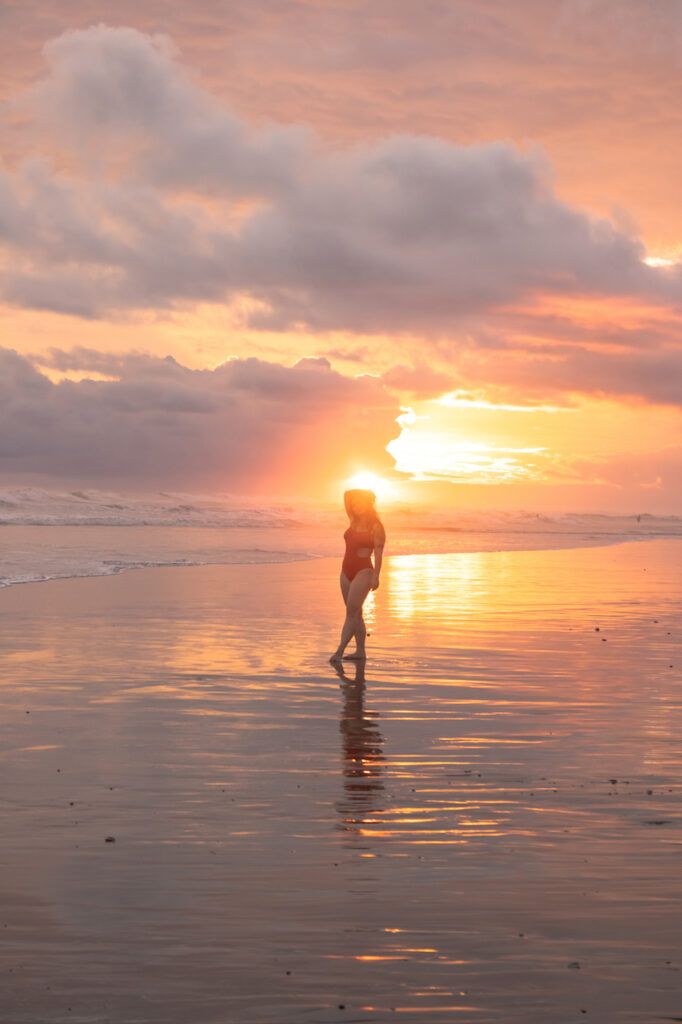
From Dominical, you can easily hop on a bus on the main highway headed toward Quepos. The bus only takes about 40 minutes and costs around $3. From Quepos, you have to take another bus (for about $0.50) to Manuel Antonio, which will take off from the same station, leaving every 30 minutes or so. This part of the monthlong itinerary is by far the easiest to do via public transportation.
Since this itinerary allows for more wiggle room, my best advice for spending three days in Manuel Antonio is to take it slow and visit the national park early in the morning in order to give yourself the rest of the day to check out the beaches. All of the abovementioned activities and accommodations apply here, with the added bonus that you’ll have more time to squeeze as many of them in.
Days 15-18: Bask in the beauty of Monteverde Cloud Forest
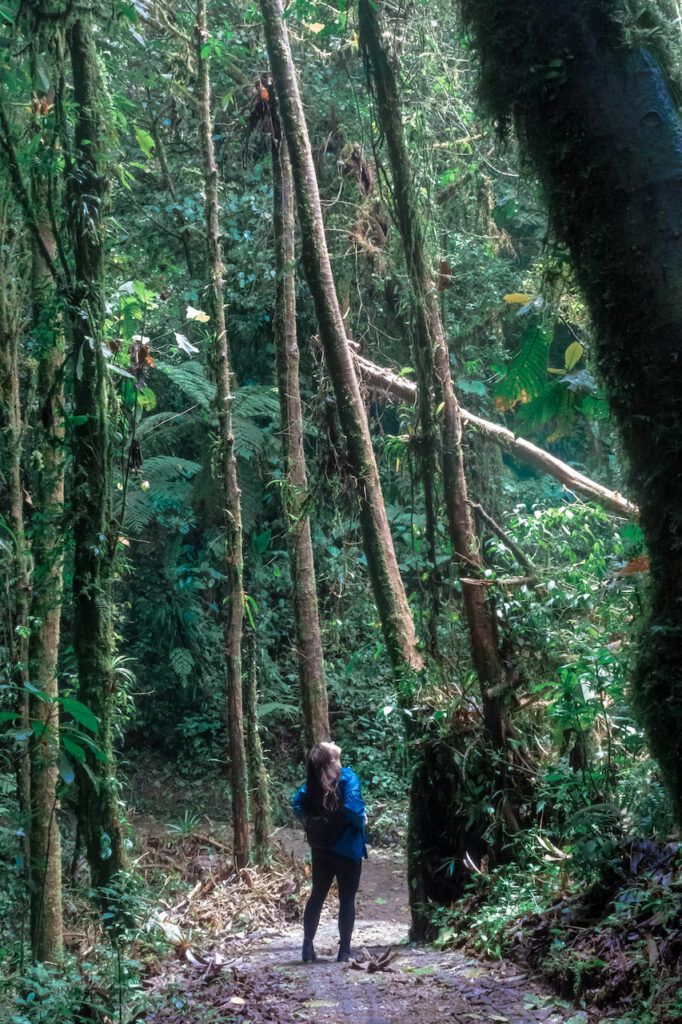
Getting from Manuel Antonio to Monteverde is very tricky on public transportation, so I recommend taking a shuttle if you don’t already have a rental car. With Interbus, the shuttle costs about $60, which is reasonable considering the public transportation route will take three times as long.
Since this one-month itinerary grants you an extra day in Monteverde compared to the two-week option, I recommend venturing out to the El Tigre waterfalls for at least one of those days. If you don’t want to leave Monteverde, though, there’s still plenty to do for three days. Check out my Monteverde cloud forest guide for more ideas, plus where to stay.
Days 19-21: Make a stop in La Fortuna
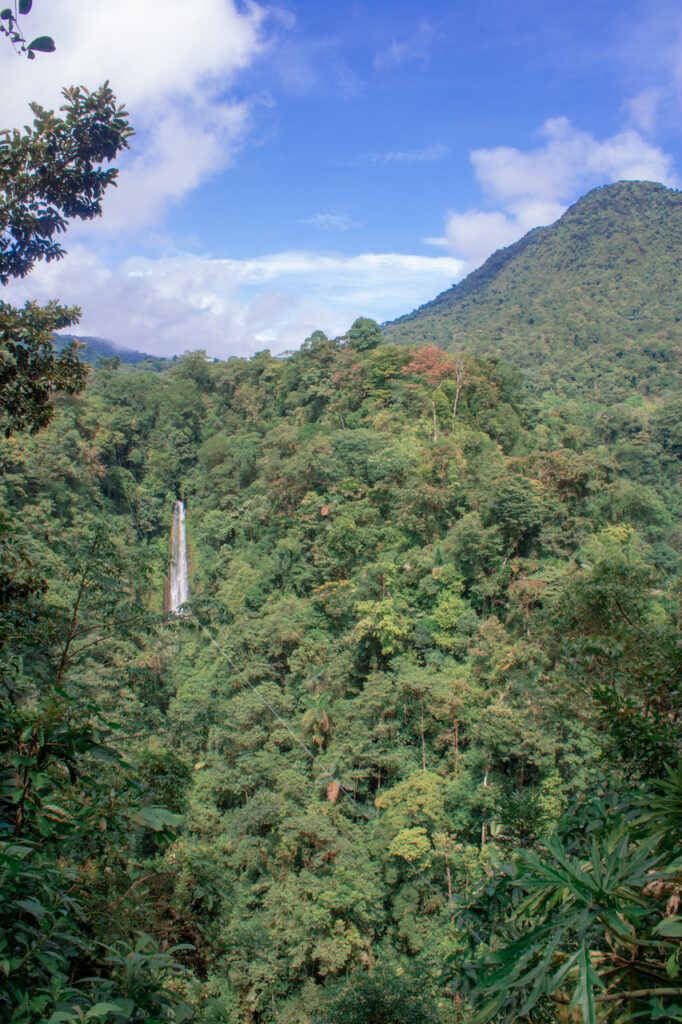
Getting to La Fortuna from Monteverde via public transportation can take up to eight hours, even though the two places are not very far from one another. This is due to the mountainous terrain and low-quality roads. However, there is an option that works well and cuts your travel time in half: a boat transfer between La Fortuna and Monteverde, which includes a scenic ride across La Fortuna Lake. It’s a bit pricey at $45, but I thought it was totally worth it due to the awesome views and shorter travel time.
Since you’ll have a few days in La Fortuna, I highly recommend taking advantage of the nearby national parks on this trip. Spend at least a day exploring Arenal National Park and venture out to Volcán Tenorio National Park to see the massive waterfall and bright blue river. You can easily spend a full day at both parks, which I highly recommend.
For more ideas on what to do here, check out this complete guide to La Fortuna.
Days 22-25: Head to the Caribbean coast, starting in Tortuguero
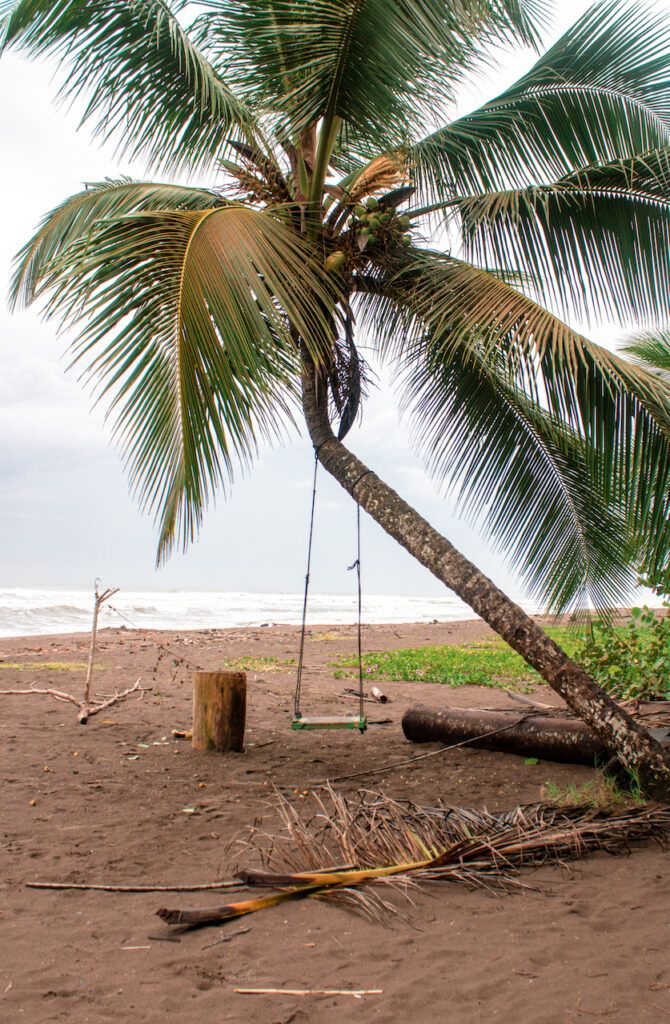
From La Fortuna, getting to Tortuguero is a very long and challenging route via public transportation. It takes about 12 hours and requires that you go all the way to San José first. (Read my Tortuguero guide to find out how to get from San José to Tortuguero.) Alternatively, you can do a shuttle, which is what I did. I booked it through Caribe Shuttle for $65. They picked me up at my accommodations in La Fortuna at 5:30am, and I was in Tortuguero before noon. Plus, it included breakfast, which was a nice surprise. For the price, I thought it was worth it, since I didn’t have a car.
Since you’ll have a whole month to explore Costa Rica, making it to the Caribbean side is a must. Tortuguero is a small island with a namesake national park known for being one of the most prominent nesting and hatching places for sea turtles.
With tranquil canals that are reminiscent of the Amazon and jungles teeming with wildlife, Tortuguero is perfect for nature lovers. The town itself is chill, with a cool vibe and delicious food, as the cuisine here is more inspired by African dishes. Overall, Tortuguero surprised me with how different it was than the other places I’d been in Costa Rica, adding to the country’s seemingly endless variety.
- Where to stay in Tortuguero: I stayed at Aracari Garden Hostel and thought it was perfect for solo travelers, couples, and budget backpackers. If you don’t mind spending a little extra, I recommend Miss Junie’s Lodge, as it’s right on the beach and has the best restaurant in town on-site.
Days 25-27: Check out Cahuita National Park
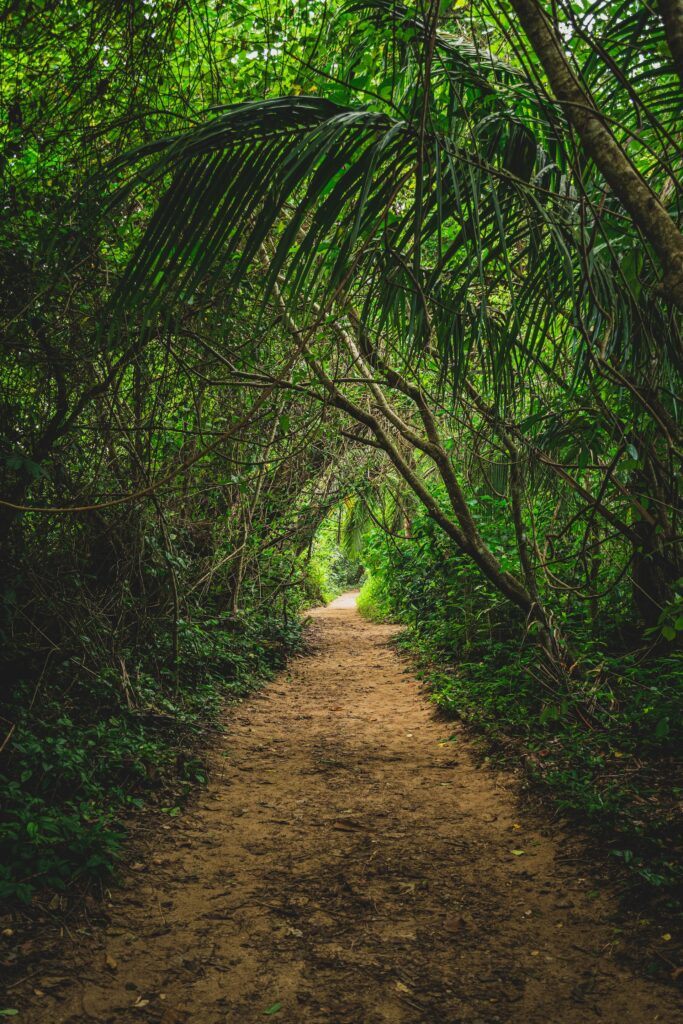
The public transportation route between Tortuguero and Cahuita is also tricky but doable. From Tortuguero, take a boat to La Pavona. From there, you can take a bus or collective taxi to Cariari. From there, take a bus to Limón, which takes about 2 hours and 30 minutes. From Limón, it’s an easy one-hour bus ride to Cahuita.
If I had more time in Costa Rica, I would have loved to visit Cahuita. Everybody told me it was a must-see, which only gives me one more good reason to go back. Cahuita National Park flies under many travel radars and doesn’t get as many visitors as Tortuguero. Plus Cahuita town is tiny and relaxed, with little to do besides enjoying the national park, which is as good an excuse as any to visit.
Cahuita is known for having an abundance of sloths, iguanas, monkeys, and other wildlife. Spend your time there hiking the trails and admiring the beautiful beaches. Unfortunately, the water here is too treacherous to swim in, but the gorgeous ocean views make up for it.
- Where to stay in Cahuita: Playa Grande Lodge is a crowd favorite in Cahuita as it’s just a 2 minute walk from the beach and within walking distance from the national park.
Days 28-29: Relax on the Beach in Puerto Viejo
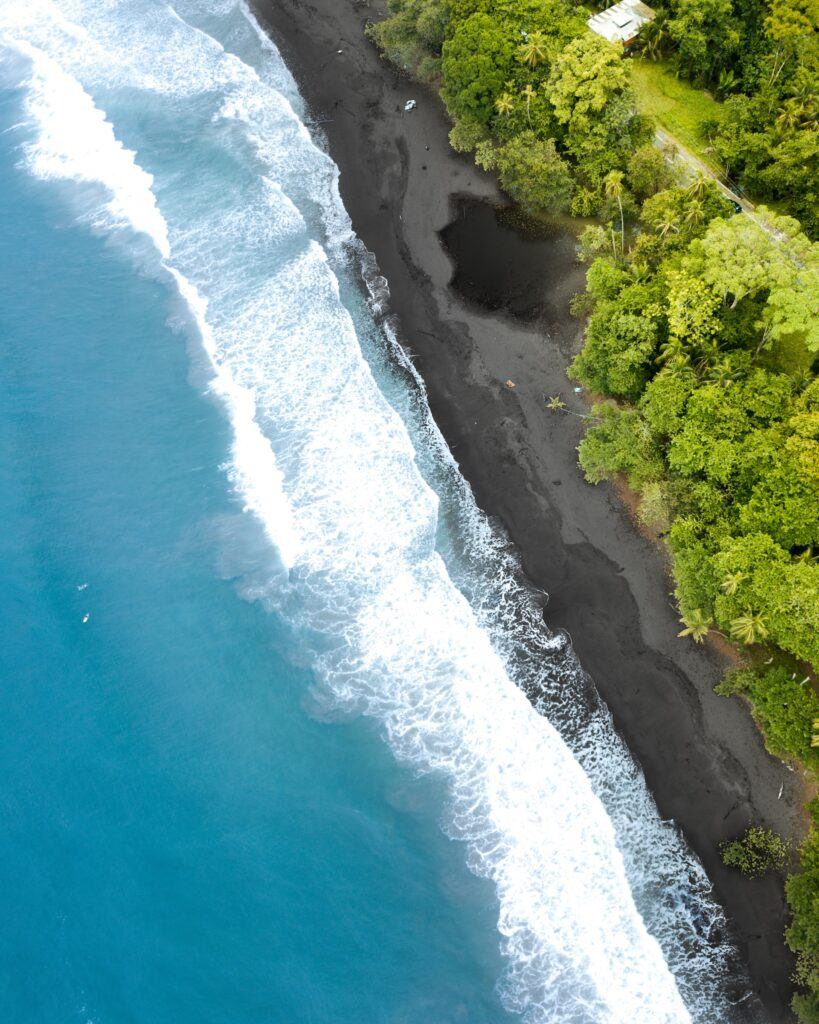
From Cahuita to Puerto Viejo there is a direct bus that only takes 30 minutes, so public transportation on this leg is a breeze. This stunning beach town is a very popular destination for surfers and has a rich Afro-Caribbean culture. From the flavors to the music, Puerto Viejo has a totally different vibe than the Pacific coast.
It’s also a great last stop on this one-month Itinerary because of the relaxing atmosphere and stellar beaches. After a month of traveling, you might also want to celebrate your trip and go out with a bang. Puerto Viejo has a fun nightlife scene where you’ll be able to do just that.
Some can’t-miss spots here are Playa Negra, where you’ll find a black-sand beach; Punta Uva, where you can kayak along a rocky coast and see some sea caves and wildlife; and Salsa Brava, which is one of Costa Rica’s most famous surf breaks, where you can either take a lesson or watch the surfers from shore.
- Where to stay in Puerto Viejo: Travelers love Casa Kimba for its excellent location in the heart of Puerto Viejo and outstanding hospitality. For budget backpackers and solo travelers, La Ruka Hostel is a top pick.
Day 30: Bid farewell to Costa Rica in San José
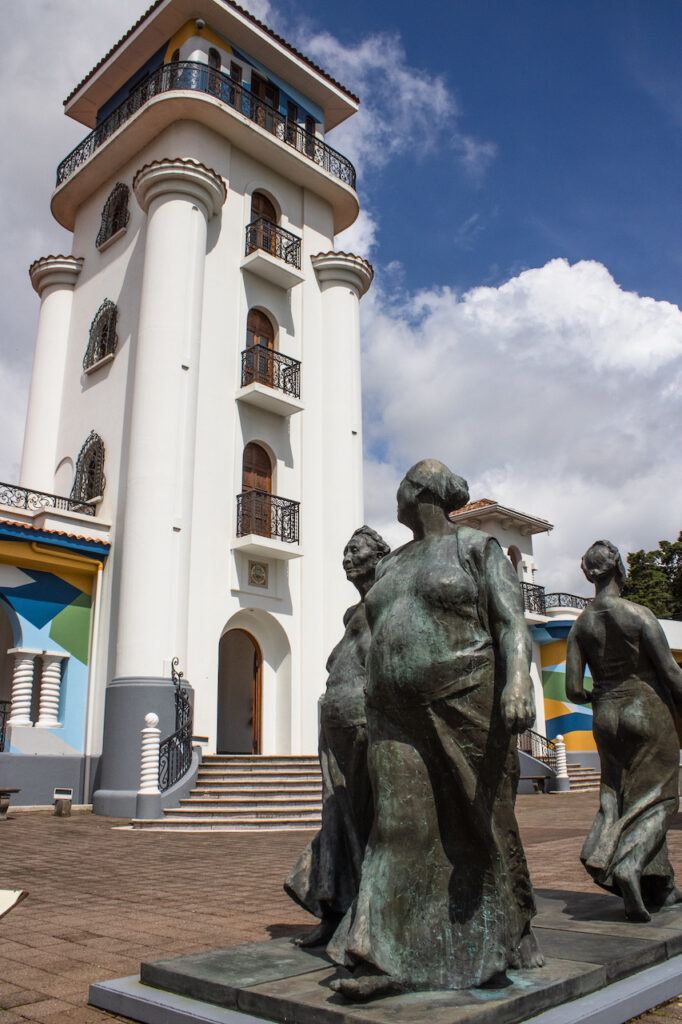
Since you already had a couple days to explore San José when you arrived, take this last day as an opportunity to revisit any places you loved, or simply spend it exploring the city on foot. If you didn’t have the chance to visit the markets (Mercado Borbón and Mercado Central), make sure to do so on your way out.
Pin me for later:


That’s it! Now you have three options for how to spend your time in Costa Rica, hitting up my absolute favorite spots and giving yourself enough time to enjoy each of them.
How long are you planning to visit Costa Rica?
There has never been a better time to plan your next trip and make your Dream vacation a reality . Whether you've been dreaming of relaxing on a sun-kissed beach, exploring ancient cities, or embarking on an epic adventure, now is the perfect moment to make it happen.



